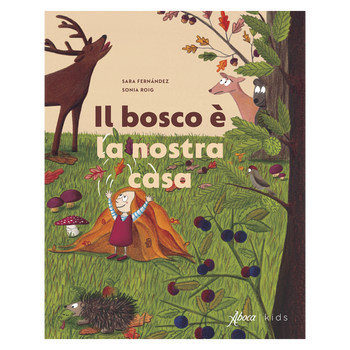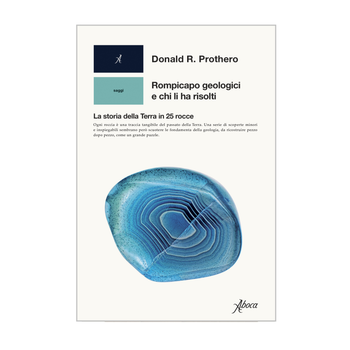You have no items in your shopping cart.
A far belle le donne di Piero A far belle le donne di Piero
Segreti e ricette di bellezza Segreti e ricette di bellezza
€35,00
The women and the art of cosmetics at the time of Piero della Francesca. The book contains receipes beauty of the '400 and '500, telling beauty remedies used at the time of Piero della Francesca. The receipes are accompanied with images of women drawn from the work of the famous Tuscan artist.
The women and the art of cosmetics at the time of Piero della Francesca. The book contains receipes beauty of the '400 and '500, telling beauty remedies used at the time of Piero della Francesca. The receipes are accompanied with images of women drawn from the work of the famous Tuscan artist.
Availability:
In Stock
Sku: PIERODON
ISBN/EAN: 9788895642000
The fascinating subject of the beauty of Renaissance women is clearly evident in the paintings and the cosmetic treatises of that time, some of which were written by women such as Caterina Sforza and Isabella Cortese.
In the volume A far belle le donne di Piero - Segreti e ricette di bellezza the female faces chosen from among those painted by the famous Renaissance artist Piero della Francesca, show how the Renaissance, which is synonymous with artistic and cultural greatness, was also a period of great importance from the point of view personal elegance and care, thanks to the use of new materials brought in along the new spice routes.
Piero della Francesca was one of the first artists to conceive of this world of beauty, giving form to the secret desires of his models, and celebrating the spirit of artistic renewal that was clearly interwoven with the alchemistic natural sciences.
The particular design of the book is based upon a series of golden rectangles with the standard sides established by the Fibonacci numbers (…, 8, 13, 21, 34,…) , which appear time again in the size of the pages, the text and the figures, in celebration of that perfection that fifteenth-century art pursued.
Behind all of this there lay the magnificence of the aristocratic courts, where the Woman, often concealed behind the face of a Madonna, is of considerable importance, as the beautiful and splendid Lady, Patron and Protector of artists.
The pursuit of beauty and perfection in art was accompanied by the re-evaluation of the person, the care of one’s body and image, and the study and utilisation of a whole series of products designed to improve one’s mental and physical well-being, from which the science of cosmetics was gradually to emerge.
The Aboca Museum, given its institutional duty to pursue the historical valorisation of natural medicines, and given its location next to the very house in which Piero della Francesca was born, and in front of the public gardens named after the artist and featuring a wealth of medicinal plants, could hardly fail to perceive this as an opportunity to celebrate the close relationship between art and science, the former designed to seize the mathematical laws of Nature, and the latter to reveal its secrets.
Coordination
- Valentino Mercati, founder and president of Aboca Spa and Aboca Museum
- Alessandro Menghini, he teaches Pharmaceutic Botany at the University of Perugia.
With the contribute of
- Roberto Manescalchi, graduated in Art History and Architecture
- Umberto Nardi, heteaches Pharmaceutic Botany and Phytocosmetics at the Sacro Cuore Catholic University in Rome.
The fascinating subject of the beauty of Renaissance women is clearly evident in the paintings and the cosmetic treatises of that time, some of which were written by women such as Caterina Sforza and Isabella Cortese.
In the volume A far belle le donne di Piero - Segreti e ricette di bellezza the female faces chosen from among those painted by the famous Renaissance artist Piero della Francesca, show how the Renaissance, which is synonymous with artistic and cultural greatness, was also a period of great importance from the point of view personal elegance and care, thanks to the use of new materials brought in along the new spice routes.
Piero della Francesca was one of the first artists to conceive of this world of beauty, giving form to the secret desires of his models, and celebrating the spirit of artistic renewal that was clearly interwoven with the alchemistic natural sciences.
The particular design of the book is based upon a series of golden rectangles with the standard sides established by the Fibonacci numbers (…, 8, 13, 21, 34,…) , which appear time again in the size of the pages, the text and the figures, in celebration of that perfection that fifteenth-century art pursued.
Behind all of this there lay the magnificence of the aristocratic courts, where the Woman, often concealed behind the face of a Madonna, is of considerable importance, as the beautiful and splendid Lady, Patron and Protector of artists.
The pursuit of beauty and perfection in art was accompanied by the re-evaluation of the person, the care of one’s body and image, and the study and utilisation of a whole series of products designed to improve one’s mental and physical well-being, from which the science of cosmetics was gradually to emerge.
The Aboca Museum, given its institutional duty to pursue the historical valorisation of natural medicines, and given its location next to the very house in which Piero della Francesca was born, and in front of the public gardens named after the artist and featuring a wealth of medicinal plants, could hardly fail to perceive this as an opportunity to celebrate the close relationship between art and science, the former designed to seize the mathematical laws of Nature, and the latter to reveal its secrets.
Coordination
- Valentino Mercati, founder and president of Aboca Spa and Aboca Museum
- Alessandro Menghini, he teaches Pharmaceutic Botany at the University of Perugia.
With the contribute of
- Roberto Manescalchi, graduated in Art History and Architecture
- Umberto Nardi, heteaches Pharmaceutic Botany and Phytocosmetics at the Sacro Cuore Catholic University in Rome.
Release date 2007
Dimensions cm 21 x 34
Pages 128
Illustrations: 26
Release date 2007
Dimensions cm 21 x 34
Pages 128
Illustrations: 26













